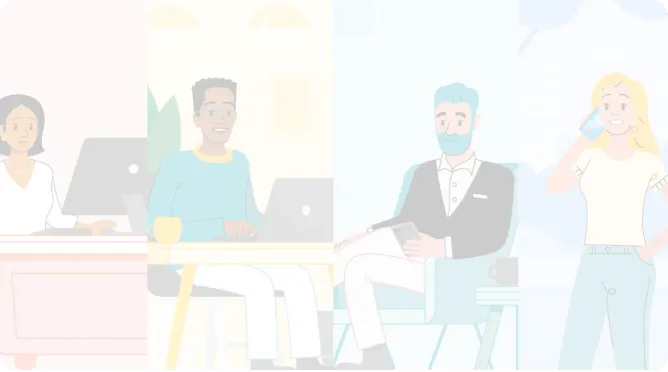Customer Stories

Will Baker, Intern at Youth Life Support Network, Inc.
Every organization needs to plan for the future. To thrive over the long term, they need to put systems in place to not only address current concerns, but also anticipate their future needs and evolve along with them. For nonprofit organizations (NPOs), planning for tomorrow is even more critical because of limited access to resources. Every move and plan must be made with sustainability in mind. This is the broader picture of what I have to consider with my work at Youth Life Support Network, Inc. (YLSN).
YLSN is an NPO in upstate New York. We work with high-risk youth and their families to prevent and de-escalate situations of family violence and other public safety issues. Our team works with dozens of cases and files at a time. I started working with YLSN a couple of months ago. As a student earning my degree in informatics, I needed experiential learning in order to graduate. I reached out to various local internship possibilities and found YLSN.
I love technology, learning, and helping others, so YLSN worked out nicely for me. I was brought on board to help revamp their old database solution and provide general technical assistance. I knew this project would not only look good on a résumé, but, more importantly, would heavily impact the day-to-day work of our team.
When I started working with YLSN, I discovered they needed a new database system to efficiently maintain, store, and backup case data. For example, in Albany offices, they used Google Forms, which was far too basic for their needs. At the Schenectady location, they used pen and paper, which was enough to make anyone with tech in their blood cringe.
I started to try to find the best solution for YLSN’s needs. In a way, it was a dream to let my mind run wild and dive into all of the different possible solutions. I knew I had to find the best platform, not only for right now, but something that would benefit the organization for years to come.

For the first three weeks of my internship, I dove into research. I looked at implementing things the old-fashioned way by setting up the server and database to be hosted locally at the office. This would result in doing manual backups, configuring IPs, and tons of upfront hardware costs. I knew there was an easier and more cost-efficient alternative.
I realized any ideal solution for us would need to be web-based. Web-based programs are easier to use, cheaper, faster, and so much less work and strain on the end user. It was a no-brainer. I met with my supervisor and proposed we embrace the new technology out there and give it a shot. I got the green light to go further a web-based solution, with a few essential requirements.
Our budget was one of the primary considerations. Being an NPO, we needed a cost-effective solution. We also required a database solution that was remotely accessible, so our caseworkers could access clients’ files off-site, during routine visits. Other requirements included the capacity to support at least 20–30 users, so we would need a good amount of storage space too.
As my hunt progressed, I found many different solutions. Zoho Creator was a little too expensive, and Memento Database was too bare-bones for us. There were cloud-based solutions like Amazon’s DynamoDB and MongoDB, but neither seemed like the right fit. When I narrowed it down to the most lightweight solution and best bang for buck, the other companies fell a bit short. In the end, my decision came down to Kintone or Knack.
Kintone offered a nonprofit pricing option, which was far below any alternatives I saw online, including Knack’s rate. But I needed to try both systems to make a choice. Knack was slightly less user-friendly than Kintone, which has a very welcoming team with high-caliber support. I’ve had multiple calls with representatives, and they truly value their customers’ feedback to make their product even better. Kintone’s subscription for nonprofits gave us 50 users for $300 a year, which would give the organization room to grow.
Every move and plan an NPO makes should be made with sustainability in mind.
I remember a conversation I had with a representative from Kintone when I looked into the company. I asked her what the limitations of their technology were. There had to be a catch—they seemed too good to be true. She said, “I hate to tell you, but there are no limitations to anything. The number of records you can create, the amount of memory you can store and save, the number of users: there are no limits.” I knew I could build a solution for the future with Kintone, not something that would last for a month. This sealed the deal for me to move forward.
I started a free, one-month trial, and I instantly loved it. I had a few small hiccups at the beginning, but as I continued to work with Kintone’s system and talk with reps, I quickly saw how powerful the software was. I knew we’d be able to make it work. We purchased the subscription and got to work on implementation right away.
I first started to build a simple platform for the caseworkers to keep track of their files. When someone from our team logs in, they’ll see a bulletin board with discussions and anything new that’s going on. Then on the other side, you’ve have different apps they’ll need for their day-to-day work. They can see the employment information, education information, or criminal history of their clients, at work or remotely while on a visit.
I’ve been able to easily add permissions to the whole system, so our administrators and other team members can only see what they should. The apps I created are simple forms that resemble the structure of fields and tables in a database. Information entered in the first app might get related back to the fourth app, so it’s amazing that Kintone lets me effortlessly connect everything.

Case management is an enormous challenge for us—or any NPO—so I can’t wait for our team to start using the new systems.
One unexpected plus throughout this whole development process has been the use of Javascript to tweak and refine our system. For example, I needed a field that would generate a client’s age based on their date of birth. With a few lines of Javascript, it was done. The platform itself has a simple interface where I can develop most of my features. But allowing me to use Javascript means I can alter the database to my heart’s desire.
Kintone has managed to modernize database management by creating something that is like a social media interface and a database all in one. You have access to discussion forums, bulletin boards, and email notifications all available on the central access portal. In some ways, the platform has the maneuverability of Android software. And the aesthetics of the themes are inviting—it makes you want to create more and better features.
Once this new system is in the hands of our volunteers, it’s going to make their lives much easier. Right now, YLSN is a small nonprofit, but the new system we’re developing can help us scale to a regional organization. With the help of Kintone, YLSN will be able to expand onto a much larger playing field. The number of people we’ll be able to serve, just like our database, are now limitless.

How Musical Empowerment Stopped Playing Musical Chairs with Their Data
#Business Management #Data Management #Operations #Team Management #NonprofitMusical Empowerment

Volvo Trucks North America Uses Kintone to Power Their Project Management
#Data Management #Project ManagementVolvo Trucks North America

Church Brothers Farms Saves Hours with Kintone’s Product Database
#Data Management #Database Management #AgricultureJennifer Sanchez
Kintone Product Introduction Video
